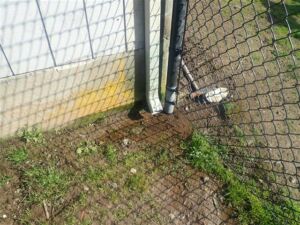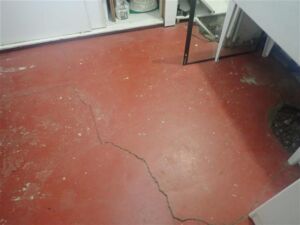
In areas of the country that receive heavy rainfall, such as Western Oregon and Washington, gutter systems installed at a roof’s eaves are essential. Downspouts should be incorporated into the gutters at least every 20 feet. Because the gutters are the avenue in which the roof water runoff leaves the home it is crucial that they do not terminate next to the home.
Typically, in newer construction the downspouts are tied into the city’s storm water system. Unless damage or blockage occurs in the pipes that lead to the city’ water system this method of water control is the best practice. In older homes it is common to find storm drain openings that are plugged or full of debris, which indicates that the storm drain has been disconnected or is no longer functioning as designed. In other instances, a home is not built in an area that has access to the city storm water system. When integrating downspouts into a storm drain system is not an option, downspout extensions must be installed that terminate a minimum of 6-10 feet away from the home. This may need to be adjusted based on the slope of the exterior grade. The ground around the home should slope away from the home a minimum of 6-inches for the first 10 feet to prevent water from draining back towards the foundation.
The biggest potential concern associated with improperly terminating downspouts is the potential for foundation settling. When significant amounts of water pool next to a home’s foundation it can affect the ability of the soil to support the weight of the structure above and can cause damage related to soil/foundation movement. A foundation that has experienced significant settling can be extremely costly for a homeowner to have repaired.
Another issue that can arise from poor downspout installation is water intrusion into a basement or crawlspace. Water pooling next to a home can seep through or under a foundation. Water intrusion into a basement may be observed by a homeowner. However, because crawlspaces are seldom entered, pooling water may go unnoticed for years.
Water penetration through a foundation wall can cause the concrete to become brittle over time, thus decreasing the service life of the material. Pooling water in a crawlspace or basement can also lead to the development of microbial growth, such as mold. An enclosed and often forgotten area like a crawlspace that has excessive moisture often experiences mold related issues. This is particularly true because damp, exposed wood provides an ideal breeding ground for microbial growth.
It is very important for a homeowner to check the integrity and functionality of their downspouts and gutters. Downspouts that become disconnected can cause the same issues as downspouts that terminate next to the home. If a homeowner has downspouts that terminate into a storm drain system, they should examine the gutters and storm drain openings during times of rain. If the storm drains or gutters are overflowing, it could indicate blockage or damage to the storm drain system. Adding downspout extensions to existing downspouts is an easy fix that could save a homeowner from serious issues down the road.
Foundation and mold issues associated with improperly terminating downspouts may go unnoticed until significant damage or health hazards have occurred. Examining gutters and downspouts should be a part of every homeowner’s home maintenance schedule. If you are worried about the condition of these systems or potential issues associated with them, you should consider having your home inspected by a qualified home inspector.

